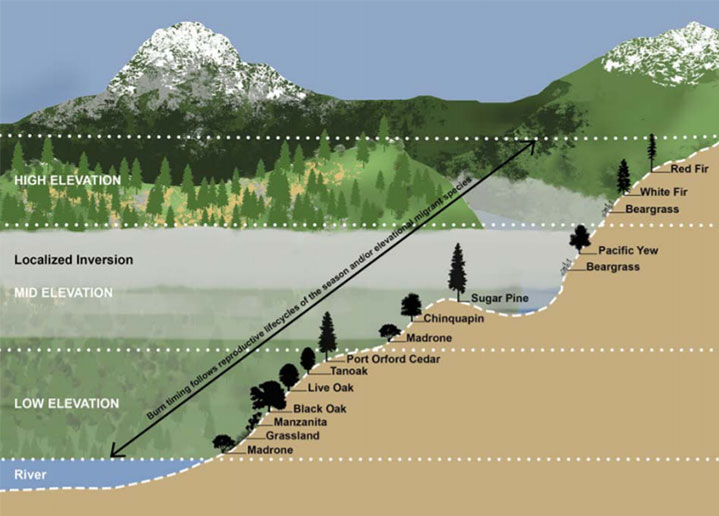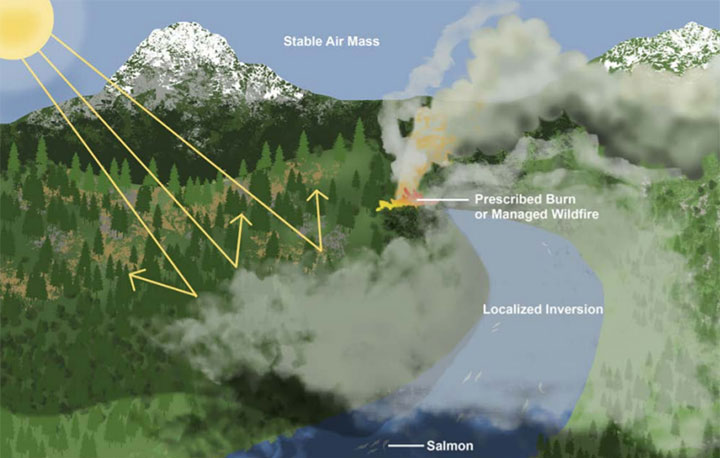Karuk Climate Adaptation Plan
(See Chapter 3: Habitat and Species-Specific Adaptations include a variety of habitats and their cultural importance given climate change impacts,
Chapter 4: Health Impacts and Adaptation Strategies include mental health and culture perspectives, and
Chapter 7: Climate Adaptations to Strengthen Tribal Sovereignty includes traditional ecological knowledge)
Karuk Cultural Management Zones
(illustrations courtesy of Kirsten Vinyeta)
Seasonality and Elevation Dynamics of Cultural Indicators in Karuk Cultural Management Zones
Our climate adaptations follow Karuk Cultural Management Zones, which are organized in relation to cultural. keystone species Tanoak and Chinquapin, and which account for the formation of smoke inversions zones below, within, and above the smoke inversion layer.

(image text)
Smoke from Cultural Burning and Managed Wildfire Cools River Temperatures
Under a mid-late June burning scenario, cultural burning or managed wildfire can create localized smoke inversions that cool water temperatures through a variety of mechanisms, including shading river systems and reducing evaporation thereby increasing stream flow.

(image text)